Looking for a science activity that’s fun, easy, and sure to impress your kids? This Pop Rocks Balloon Experiment is the perfect blend of excitement and learning! Using just a few everyday items, kids can watch a balloon inflate without ever blowing into it—thanks to a fizzy chemical reaction between soda and Pop Rocks. It’s a great way to introduce basic science concepts like gas release and chemical reactions, all while having a blast!
This post contains affiliate links.
How to do the Pop Rocks Balloon Experiment
Ready to see the magic happen? Follow these simple step-by-step instructions to try the Pop Rocks Balloon Experiment and watch your balloon inflate all on its own!
Materials Needed:
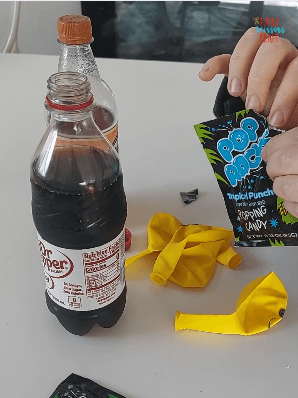
-
1 small bottle of soda (8–12 oz, any carbonated drink works—clear ones like Sprite or 7UP show bubbles better)
-
1 packet of Pop Rocks candy
-
1 balloon
-
A small funnel or piece of paper rolled into a cone
-
Optional: string and ruler to measure how big the balloon gets
Instructions:
-
Stretch the Balloon
Gently stretch the balloon to loosen it up. This makes it easier to inflate. -
Add Pop Rocks to the Balloon
Using a funnel or a rolled-up paper cone, pour the entire packet of Pop Rocks into the empty balloon.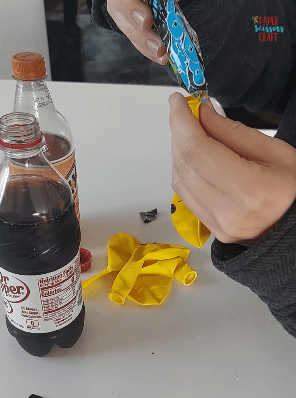
-
Carefully Attach the Balloon to the Bottle
Without letting the Pop Rocks drop in yet, stretch the balloon’s neck over the mouth of the soda bottle. Make sure it’s snug and secure so gas won’t escape.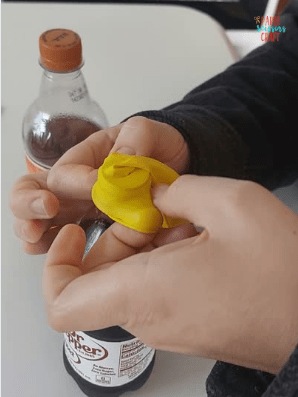
-
Lift the Balloon and Let the Pop Rocks Fall In
Once the balloon is attached, lift it up so the Pop Rocks fall into the soda. Watch and listen—it’ll start fizzing and popping right away!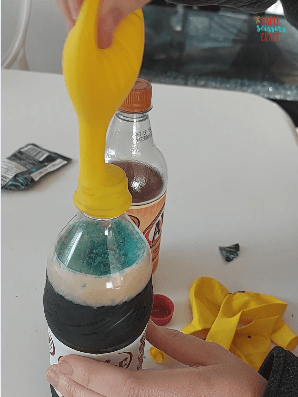
-
Watch the Balloon Inflate
The carbon dioxide gas released by the reaction will begin to fill the balloon. Depending on the soda and temperature, this might take a minute or two.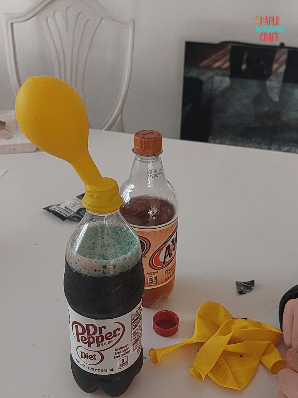
💡 Science Behind It
Pop Rocks contain pressurized carbon dioxide (CO₂) gas trapped inside tiny candy shells. When they dissolve in soda, they release even more gas. The soda itself already has CO₂, so the combination creates a fizzy explosion of bubbles. All that gas needs somewhere to go—so it fills the balloon!
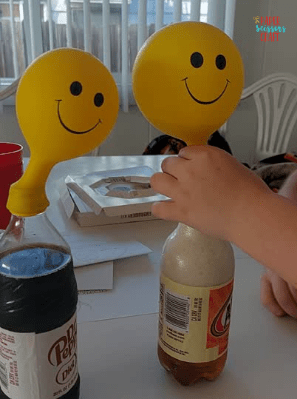
Common Questions About This Experiment
Can I use any type of soda?
Yes! Most sodas will work, but carbonated ones like Sprite, Coke, or root beer give the best fizzy reaction. Clear sodas let kids see the bubbles better.
Do I have to use the whole packet of Pop Rocks?
Using the full packet gives a bigger reaction, but even a few spoonful’s will work. You can experiment with different amounts to compare results!
What if the balloon doesn’t inflate?
Check that the balloon is sealed tightly on the bottle and that the Pop Rocks actually fell into the soda. Also, make sure the soda hasn’t gone flat—fresh fizz works best!
Is this experiment safe?
Yes! It’s safe for kids when done with supervision. The reaction stays inside the bottle and balloon, and there’s no heat or mess involved.
Can I reuse the balloon?
If it’s still in good shape, sure! Just rinse it out and let it dry before using it again.
Fun Ways to Extend this Science Experiment
Once you’ve tried the basic Pop Rocks Balloon Experiment, there are plenty of fun ways to explore even more! Try one of these ideas to turn it into a creative science challenge:
-
Test different sodas – Does cola work better than lemon-lime? What about club soda or diet soda?
-
Try different candy – What happens if you use Nerds, Mentos, or baking soda instead of Pop Rocks?
-
Measure the results – Use a string and ruler to measure how big the balloon gets with each variation.
-
Use warm vs. cold soda – See if temperature makes a difference in how fast or how big the balloon inflates.
-
Make predictions and chart results – Turn it into a mini science fair project by making a hypothesis, collecting data, and drawing conclusions.
These simple extensions keep kids engaged and encourage them to think like real scientists—testing, observing, and having fun along the way!
A Fun Science Trick!
Science doesn’t have to be complicated to be amazing! This simple Pop Rocks Balloon Experiment is a fun, hands-on way to spark curiosity and get kids thinking about how reactions work. Whether you’re teaching a lesson on gases or just looking for a rainy-day activity, this fizzy trick is sure to bring smiles and learning at the same time. Don’t forget to ask your kids what they think caused the balloon to inflate—you might be surprised by their scientific thinking!
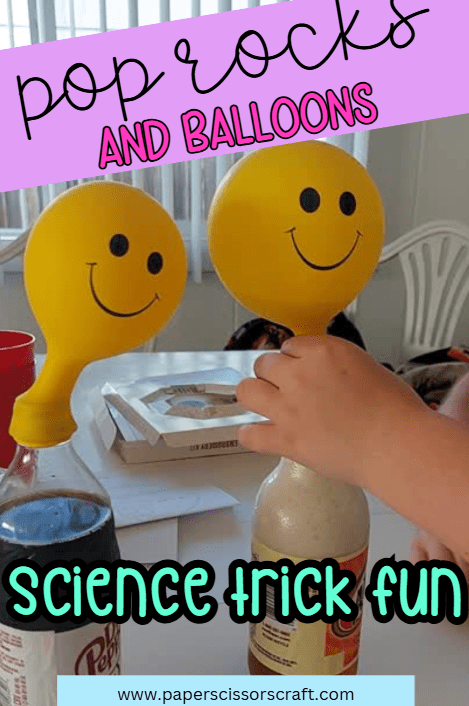


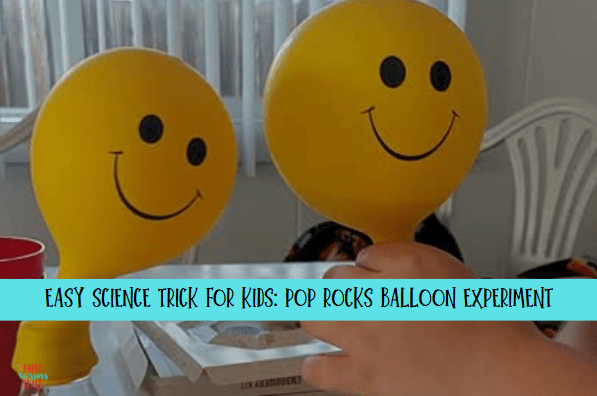

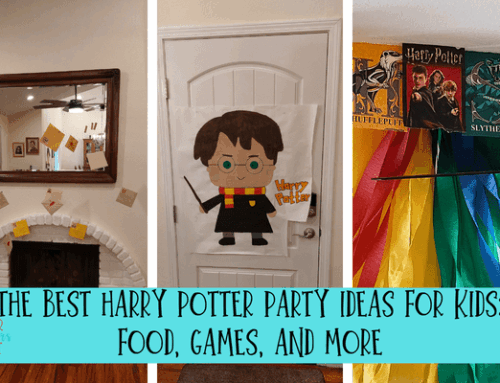
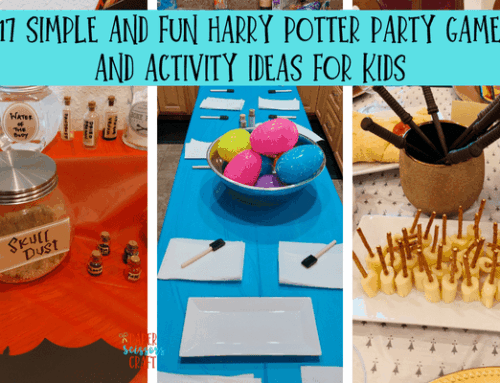
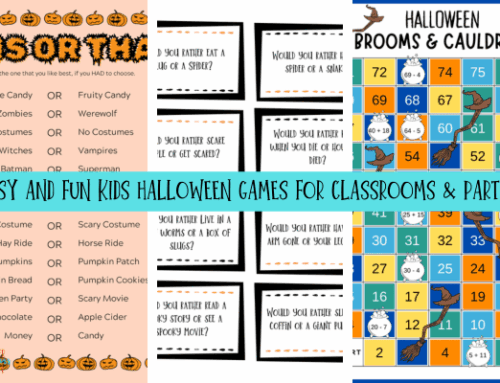
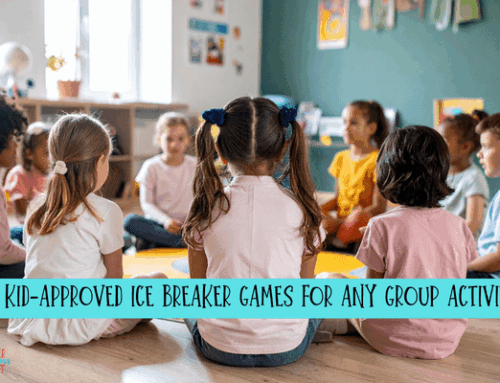
Leave A Comment